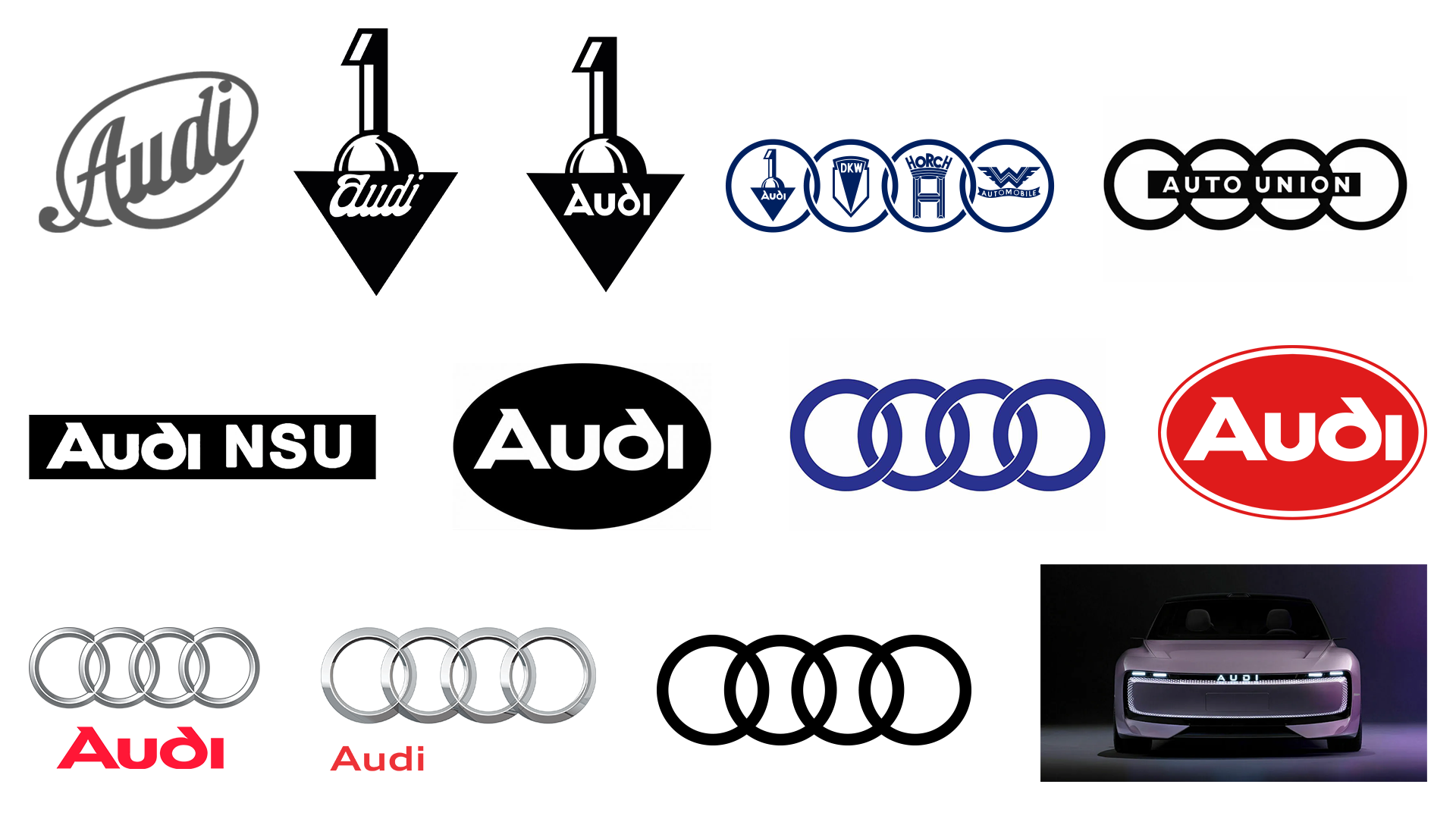Ben Whitesell on fan art, copyright and Moonrise Kingdom
He's gone from fan art to working with NBC Universal on an official poster for Wes Anderson's new movie. We speak to the illustrator about his inspiring journey.
Fan art has never been more popular. Whether illustrators are selling or displaying their work via their own sites, or taking advantage of online stores, the market for work based on classic movies, albums, games - and more - has never been greater.
At one end of the scale is Etsy, where illustrators are selling (not officially endorsed) work for a few pounds, and producing it on colour printers. At the other end of the scale are the likes of Mondo, which partners with studios to produce endorsed artwork in collaboration with leading artists. These posters have a limited print run, and use high-quality screen printing techniques to produce works that often sell out in a matter of seconds.
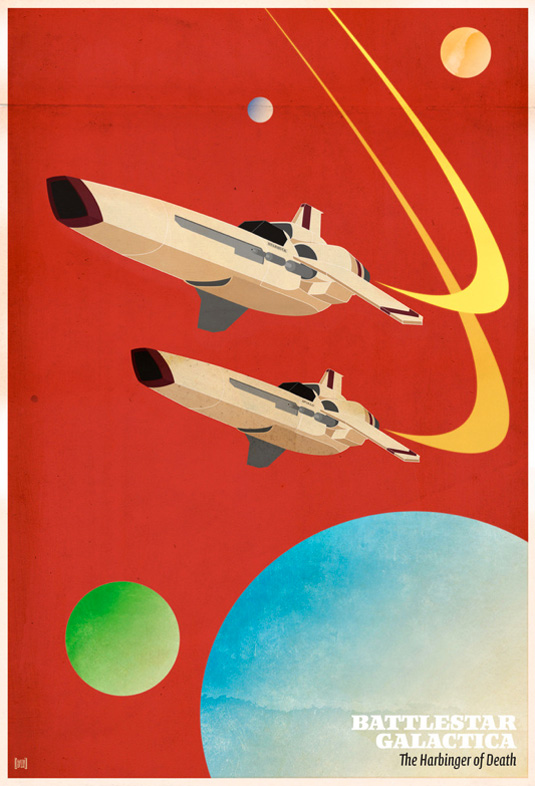
Ben Whitesell

Ben Whitesell is one illustrator who embodies the ever-growing fan art scene. Starting out on Behance, Ben would create fan art for fun, in design challenges that took place within a vibrant community of designers.
As his work was shared, his reputation grew, and Ben's art was recently used by NBC Universal to promote the DVD release of Wes Anderson's new movie Moonrise Kingdom.
Ben has BA in Art History from Hanover College in Indiana. He is currently employed as a full time designer for UPS working in a variety of media including brand design, photography, and video production.
In this interview we talk to Ben about his work, his inspiration, and the grey area of copyright infringement in fan art.
QUESTION: How did you get into illustrating posters and fan art?
"When I was first getting into the poster and fan art scene, I was a member of an online community on the Behance Network that specialised in creating re-imagined 'minimal' movie posters. Each month a new actor/actress name would be sent to the group and you would choose a picture from their filmography to create a poster around.
Get the Creative Bloq Newsletter
Daily design news, reviews, how-tos and more, as picked by the editors.
The fan art community became my creative outlet
"By day I’m your standard corporate brand designer, which can be rewarding in many ways, but it is challenging keeping the work fresh when tied to a big old brand book. The fan art community became my creative outlet.
"As I continued to upload posters, I could see that I was slowly moving away from the minimal style, which was very popular at the time, to more complex and intricate illustrations.
"The online fan art community started to take notice of how passionate I was about the work and it started to get reposted on more and more websites and blogs. I have the utmost respect for fan art community because of the passion they have for the source material. So much passion, that many of us spend most of our free time creating artwork to share with other fans."
QUESTION: How did the opportunity to work on Moonrise Kingdom come about?
"I had created two posters for Kubrick’s The Shining that became very popular and ended up being added to an online exhibition of Kubrick inspired artwork for La Cinémathèque Française, who were doing a Kubrick retrospective.
"That got me the attention of a few entertainment and design websites, including Shortlist.com, the website for Shortlist magazine published in the UK. I participated in some of their alternate movie poster galleries and developed a good relationship with the online editors.
I am a huge Wes Anderson fan, and really enjoy his style of storytelling
"When the chance to do a fan art Moonrise Kingdom poster for Shortlist.com came up, I jumped. I'm a huge Wes Anderson fan, and really enjoy his style of storytelling. He has a strong eye for design, which is evident in the way he frames his shots and his use of unique colour palettes.
"Thanks to my connection at Shortlist.com my name got passed along to folks at NBC Universal in the UK, and my poster got picked up for use as a promotional give-away to highlight the DVD release. So, it ends up being not just about having a passion for the work but also making the right connections and networking."
QUESTION: Which piece of work are you most proud of, and why?
"I have to say given the overwhelming comments and positive feedback from the Moonrise Kingdom poster it has become one of my favourite works.
"I created the Moonrise Kingdom poster from just watching the trailer and looking through the film’s website prior to it’s release. It really is a challenge to form a design idea around a minute or two of quick cut footage. But, being a fan of Anderson’s work and having a keen sense of his visual style, I think I was able to make a connection between the film and the final design.
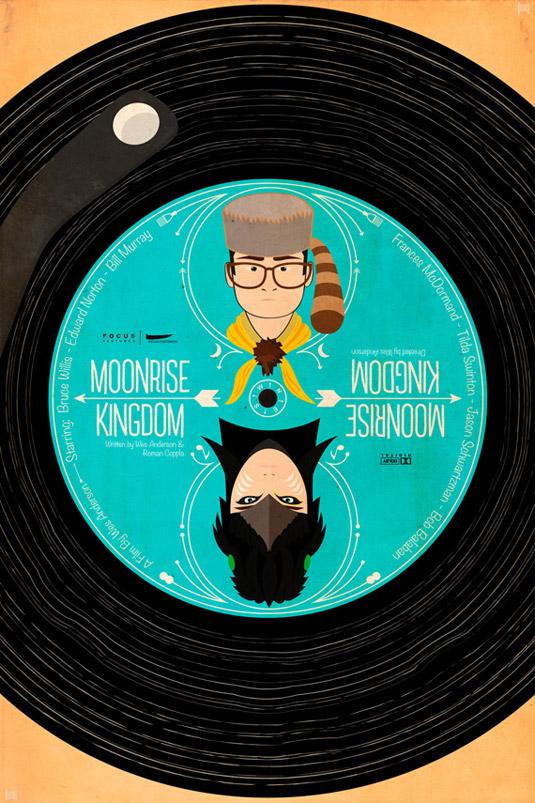
"I also like the fact that there isn’t really a top or bottom to the piece. The poster is meant to be very symmetrical so that no matter how you flip it, the design works either way. That is a little homage to Anderson’s notorious use of symmetrical shots in his films."
What advice would you give to someone getting started in poster design?
"The best advice I could give anyone who wants to design posters is create designs based on the things you love. It makes it easy to put in time when you are excited about what you are creating.
"I have love for not just film, but also the tradition of the theatrical release movie poster. Think about how the movie poster has become a part of pop culture.
Saul Bass brought respect to the art form with his work for Hitchcock and Kubrick
"Saul Bass brought respect to the art form with his work for Hitchcock and Kubrick. Drew Struzan may be the most famous pop artist you don’t know unless you’re a film nerd, but his work on the posters for Star Wars, Indiana Jones, and Back to The Future, to name a only few, are iconic images from the 80s and 90s.
"To be a part of that tradition and help usher it into the age of Photoshop is a great feeling. And that excitement is what you need to be successful at poster design."
QUESTION: What is your design process?
"I work for the most part completely digitally. My initial working process might be to begin with a few thumbnail sketches, if I am struggling with an idea, but I typically jump right into Adobe Illustrator CS6. That is not to say that I don’t think having a good grasp of the fundamentals like drawing is important.
"I have an art history and studio art background, which has been invaluable to understanding certain digital illustration techniques and making the right aesthetic choices. Usually though I have a strong sense of where I am going to go with a piece, so I go straight to the computer.
I do rely on my iPad for research and for quick references
"From a hardware standpoint, I live and die by my 27-inch iMac. Having plenty of screen real estate is key for me when I am working because I like to have my application palettes open and at the ready. All my personal projects are done from my home office. I do rely on my iPad for research and for quick references and recently started using an old MacBook to do minor illustration tweaks when I can’t be home, but I tend to stay in one place for the big stuff."
QUESTION: How do you produce your posters?
"I print all my own stuff right now, mainly because I am a perfectionist when it comes to my prints. I actually only use inkjet printers. I have a smaller Epson for prints up to 13” x 19” and then I recently came into possession of a wide format Epson that bumps me up to 24” wide, by at least 100 feet long if I wanted.
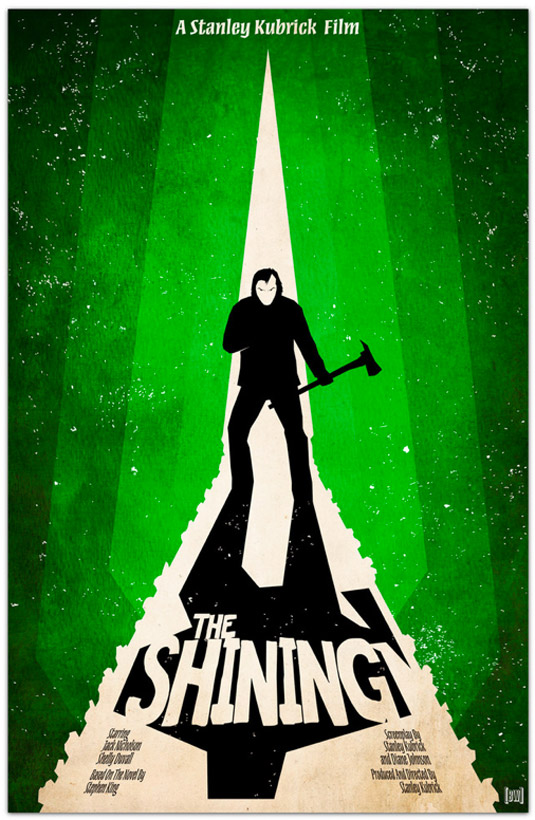
"A lot of my illustrations are started in Illustrator and then broken up and reassembled in Photoshop CS6, where I typically add texturing, adjust colours, or add some effects. I can then fine-tune those elements based on how the prints come out. This would be a difficult workflow with screen-printing because of lengthy setup involved and the need to work in specific colour separations."
QUESTION: Is it important to promote yourself on using social tools etc?
"I rely heavily on self-promotion. In today’s world, that means knowing which social tools to use. The big plus is that most of them are free. I use Twitter to help get the word out when I post new work online and to help make initial introductions with other artists working on things I find interesting. It really helps to drive traffic to my portfolio and blog too, which in turn helps grab project referrals.
My newest tool though is Pinterest. It’s is my new source of quick design inspiration
"My newest tool though is Pinterest. It’s is my new source of quick design inspiration and has a great iPad app for finding inspiration on the go. Because you can “pin” almost anything on the web to a board with Pinterest some of my work is already on the site thanks to other users pulling it from my own websites. I just recently started adding more of my work and it has helped expand my brand visibility."
QUESTION: What tools have you used to create your web presence, and why?
"A year or two ago Behance started the ProSite program, that allows you to create a custom portfolio site using an easy to use interface. The price was good and Behance was responsible for the hosting and general developer maintenance, which freed me up stay focused on creating art.
Scott Belsky is a real advocate for creatives and is highly active on Behance
"My blog came next and I ended up going with Squarespace, because it was easy to use and update much like ProSite. I actually just got an email from someone who was reading my blog post on this very subject, asking why I didn’t just switch my portfolio over to Squarespace when they started offering a portfolio site creator. That way both my portfolio and my blog would be with the same service.
"I wrote back saying that you can’t beat the creative community on Behance, and the level of exposure you can get through their service. I have also had amazing interactions with team members including the founder and CEO; Scott Belsky is a real advocate for creatives and is highly active on Behance himself helping to promote people’s work.
"I should also throw in the fact that Behance is not reimbursing me in any way for these comments, it is just a great site to work with thanks to the community and people that manage it."
QUESTION: How do you sell your work?
"My online ecommerce store at Moving Merch was the most recent addition to my web presence. I run that through BigCartel. Again, it’s easy to update and has a good month price, which is what steered me in their direction.
"I had looked at a few slightly higher priced sites that had a lot more features for site customisation, but BigCartel allowed me to get up in running in the least amount of time. Plus they are always updating their features. A big recent update to their site customization panels in the last year has really helped me to create a more custom storefront.
"All the financials are tied to Paypal, so I don’t have to worry about how transactions are managed which was my biggest fear when setting up a store.
A solid web presence is the best way to get your name or brand out there
"The key for me was to find a way to manage a portfolio site, a blog, and a store and spend the least amount of time worrying about how things would run and how easy they would be to update.
"A solid web presence is the best way to get your name or brand out there but it shouldn’t dominate all your time. Time that would be better spent creating."
What are your views on the debate taking place around copyright infringement in the fan art scene?
"This is a tough question. By the very nature of fan art you are working with someone else’s intellectual property in some respects. But, at no point do I think it is done in malice. People who create fan art are creating something to share with other’s that have similar interests based on source material that they love. In many ways they actually help to promote the source material and keep the excitement alive for those that couldn’t experience it originally. The original Star Wars Trilogy being a good example.
I think that for the most part, the people promoting the source material see it as an actively engaged audience
"There are also financial ramifications, but I have yet to run across someone that has made it rich off of creating fan art. The people that are pulling in any real money are those that have licenses like the guys with Mondo – Alamo Drafthouse Cinema.
"They do artist driven movie posters of classic films that are usually on sale via their website for about 30 seconds before they are sold out. I think that for the most part, the people promoting the source material see it as an actively engaged audience. If the rules of social media have taught us anything of any real importance, it is that people want authenticity. And what is more authentic then someone that loves a subject so much they spend their free time creating art based on it.
"I think there will always be a fine line between the world of fan art and copyright infringement. It makes you think back to the group that came up with the design for the Campbell soup label and to Andy Warhol who made a fortune recreating it almost exactly on canvas. Would one be as iconic without the other? Maybe, maybe not."
Moonrise Kingdom now available on DVD
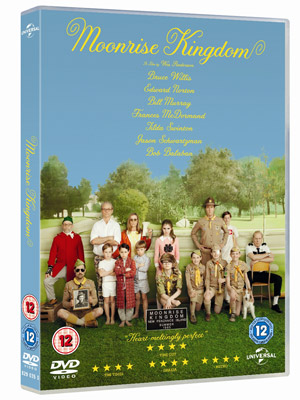
Helping promote Moonrise Kingdom gave Ben Whitesell the opportunity to work with a studio for the first time, and you can view the work of Ben - and other artists - over at Shortlist.com. Moonrise Kingdom - starring Bruce Willis, Edward Norton, Bill Murray, and Tilda Swinton - is an eccentric love story that takes place in the summer of 1965 on an island off the coast of New England. Two 12-year-olds run away together, and the island is turned upside down in the manic hunt for the kids. Fans of director Wes Anderson's previous films won't be disappointed, as he uses nostalgic, visually stunning shots to tell this story of childhood innocence. Moonrise Kingdom is available to buy on DVD and Blu-ray now.
Also read:
- Top 20 iconic movie posters
- 75 awesome Illustrator tutorials
- 40 best iPad apps for designers

Thank you for reading 5 articles this month* Join now for unlimited access
Enjoy your first month for just £1 / $1 / €1
*Read 5 free articles per month without a subscription

Join now for unlimited access
Try first month for just £1 / $1 / €1

The Creative Bloq team is made up of a group of art and design enthusiasts, and has changed and evolved since Creative Bloq began back in 2012. The current website team consists of eight full-time members of staff: Editor Georgia Coggan, Deputy Editor Rosie Hilder, Ecommerce Editor Beren Neale, Senior News Editor Daniel Piper, Editor, Digital Art and 3D Ian Dean, Tech Reviews Editor Erlingur Einarsson, Ecommerce Writer Beth Nicholls and Staff Writer Natalie Fear, as well as a roster of freelancers from around the world. The ImagineFX magazine team also pitch in, ensuring that content from leading digital art publication ImagineFX is represented on Creative Bloq.
